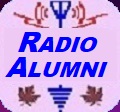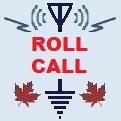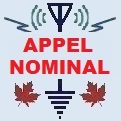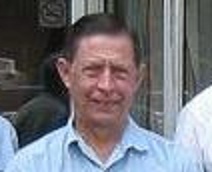|
|
RADIOALUMNI.CA |
|
|
CANADIAN EPICS IN RADIOCOMMUNICATION ALUMNI WHO LIVED THE ADVENTURE OF RADIO WIRELESS TELEGRAPHISTS - SPARKS - RADIO PIONEERS RADIO OPERATORS - RADIO TECHNICIANS RADIO TECHNOLOGISTS - RADIO ENGINEERS RADIO INSPECTORS - SPECTRUM MANAGERS |
|
ÉPOPÉES CANADIENNES EN RADIOCOMMUNICATION LES ANCIENS QUI ONT VÉCU L'AVENTURE DE LA RADIO TÉLÉGRAPHISTES SANS FIL - PIONNIERS DE LA RADIO OPÉRATEURS RADIO - TECHNICIENS RADIO TECHNOLOGUES RADIO - INGÉNIEURS RADIO INSPECTEURS RADIO - GESTIONNAIRES DU SPECTRE |
Thomas Racine joined the public service of Canada on October 10, 1972. It was his first full-time job after graduation from Queen’s in Engineering Physics. He was in a language training relief position to replace anyone in the section who needed to go on language training. Thus his job description was an amalgam of every duty performed within the section. His initial salary was $8200.
The section at the time was DOS-E and was headed by Garth Roberts. This was an engineering group within the operations division. They were responsible for all microwave assignment and licensing for Canada, radars, earth stations, radio beacons and for the radio equipment type approval. Some of the names in the section were Don Fraser, Gerry Smith (Bobby Smith’s father), Harry Tucker, Patrick Doyle, Marilyn Shiposh and François Sigouin. One of Tom’s first jobs was to draw the 54 Telesat Earth Station Co-ordination Contours using output from an Appendix 27 computer program written by Ron Amero.
A DND employee was working on a follow-on program to actually calculate interference between earth stations and terrestrial microwave stations. The terrestrial microwave database at the time was still in a batch system on tape. This system had been developed earlier by Vishnu Sahay. Since no-one in the section had yet gone on language training, Tom was given the job of converting this batch system to an on-line one using the department’s computer system at CRC, a Sigma 5 under the CP-IV operating system. He completed this and then extended it with the earth station analysis. This was done using a teletype machine as a terminal to connect to the remote computer at 110 baud (e.g. 10 characters per second). Though he had only taken one six hour course in Fortran in school, Tom developed a keen awareness of computer capabilities during this assignment.
In 1975, the spectrum management program sought and obtained funds for further computerization. The proposed project had three components: the assignment and licensing system, the electromagnetic compatibility system and the spectrum surveillance system. Bud Hoodspith was the DG at the time and was seeking the assistance of BMC (pre-cursor of DGIM/CIO) to write a program to analyse the SSS tape. Tom was at the meeting where BMC indicated that the minimum time required to do this was six months. He laughed. Mr. Hoodspith asked him why he was laughing and he volunteered to have the program ready in two days. (A FORTRAN version of the program existed for UNIVAC but BMC didn’t feel they could use it). The DG took him up on his offer, the program was delivered and, except for a short interlude, he has been working on the spectrum management system ever since.
He first developed a number of graphical tools for representing the SSS data. The channel histogram format, the method of establishing noise floor, the distinctions between transmission occupancy and message occupancy, the derivation of individual base station occupancy, the estimation of mobile occupancy from base station occupancy so that a grid of measurement sites would not be necessary were all derived during this period and many are still used today.
Young, brash and impatient, Tom arrived at a point where he needed licensed station data to compare to the occupancy data that was being collected but the ALS and EMC portions of the project were bogged down. Max Melnyk was the SMS manager at the time and Tom proposed building a pilot EMC system around the DFL (Domestic Frequency List). Again he delivered though a few feathers got ruffled. Tom was tiring of the politics and felt it was time for a change.
John Madden (no not the Raiders football coach, now NFL commentator) but a DG at CRC was looking for an executive assistant. Tom went to CRC and spent six months doing this fix-it job becoming very knowledgeable about the administrative systems, policies and procedures. When Dr. Madden left, Tom joined Bill Irvine and Keith Hooey in Lou Hatton’s group working on a military communications project. There he says he did his first piece of real engineering. He built and programmed a digital interface board that included waveform A to D conversion, sampling clock whose rate varied with time from waveform trigger to collect more precise data in the initial period and fewer samples after the initial few milliseconds, on-board data storage that was then read by the computer later and further analysed (the computer was not fast enough to process this data directly without this on-board storage). The interface was built with wire-wrap techniques and worked flawlessly though Tom had not taken any digital electronics courses in school and purchased a Heathkit course and trainer to grasp the basic concepts.
After 18 months at CRC, Tom returned to an Eng-5 position in SMS in 1978 and participated in the design of the GRS processing centre. He then became re-involved in the development work on Pilot 3 and the ALS (Mainframe IBM at that point). For three years as this system was delivered, Tom spent every waking minute at work. Because the system was being used during the day, Tom would start his day around 4 PM to talk to staff concerning any problems that were being encountered. He would then work to 8 AM the next morning in order to brief staff on what now should work. The mainframes had scheduled maintenance on Saturday and Sunday evening at 8 PM. Therefore when Tom came to work Friday night at 4 PM, he stayed until Saturday at 8 PM. He returned Sunday at 8 AM and stayed to 8 PM. You do the math. That’s a lot of hours every week. For three years.
When the system stabilised, Tom took six weeks holidays and travelled in his Corvette with his mother from Ottawa to Vancouver, down to Los Angeles and returned across the American south west. Even so, he made a stop at Lake Tahoe near Las Vegas to take in a System 2000 conference.
Tom returned and developed the OLDE system on an Osborne 1 computer that he purchased. Pilot 3 had originally tried to use a smart terminal for data entry but the effort proved futile and the initial implementation of ALS used keypunching of the 888 and 889 forms for data entry. This had caused much gnashing of teeth and Tom felt the technology had now progressed to make data entry on computers viable. The program was developed, a communications program adapted for use with the IBM mainframe and rolled out using the Kaypro IV computers.
About this time (1984), maintenance was starting to impact the ability to develop further systems. A new group was formed to undertake the maintenance so that further development could proceed unhindered by the day-to-day. Mary was hired as part of this new group. Tom married her and settled down.
Other systems followed, though Tom was now managing development rather than doing the programming. The MAS (Microwave Analysis System), the SCOMS (Spectrum Control Operations and Management System), the SMIS (Spectrum Management Information System formerly ROMIS, STMIS), the ISOCs (Integrated Spectrum Observation Centres), the REL/TEL were included among these systems.
A joint effort of both groups with contract support converted the mainframe system to client server using Oracle over a three year period. Tom also decided to return to school and get his MBA through an executive program just beginning at Queen’s in Ottawa. (’92-’94)
In 2002, the process to replace these aging systems began and Tom was coerced to lead the procurement effort. He retired in June 2004 but is currently working part-time to ensure his experience is available during the planning phase of the SIRR (Spectrum Informatics Review and Redesign) project.
|
||||||||||||||||
|
Related Links --- |
||||||||||||||||





